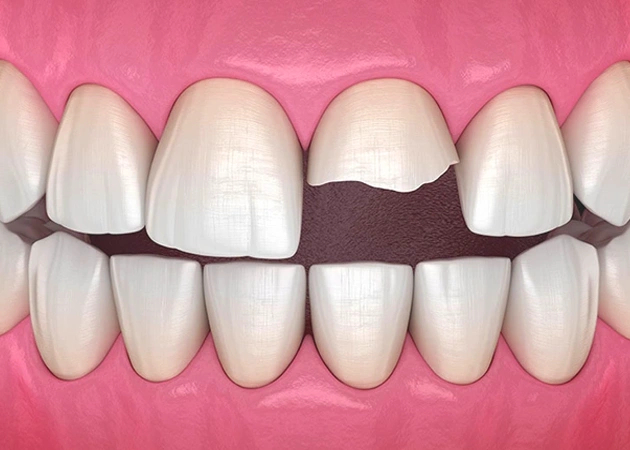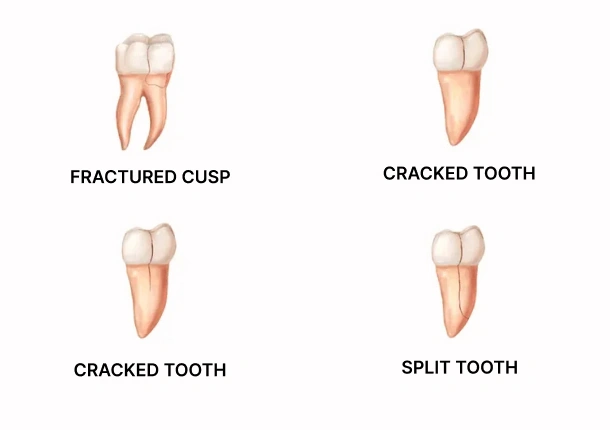
Understanding and Managing Cracked Teeth
Cracked teeth result from stressful situations which cause you to clench your teeth together or a habit of eating hard foods. Sometimes cracks in teeth can be painless and superficial, but oftentimes they can become debilitating and prevent you from chewing on that tooth. It is important to see your dental professional regularly to catch these problems early before they require more advanced treatment or possible extraction.
Causes of Cracked Teeth
A cracked tooth often results from a combination of factors, including:
- Trauma: Direct blows to the mouth—whether suffered on the football field or during an automobile accident—are frequently responsible for fractured teeth.
- Bruxism: Grinding or clenching teeth, usually subconsciously during sleep, places undue stress on them and causes cracks over time.
- Chewing Hard Foods: When you chomp down on an unpopped bit of popcorn, this might not sound serious, but actions like that could ultimately lead to a cracked tooth.
- Large Fillings: Your tooth might be more likely to crack if extensive restorations have weakened the structure of your teeth. Your dentist may spot larger restorations with early signs of fracture and recommend that a crown be placed on the tooth to prevent further damage.
Types of Cracks
Cracked teeth come in various forms, each requiring different approaches:
- Craze Lines: Tiny, superficial cracks that are usually painless.
- Fractured Cusp: A crack that typically occurs around a dental filling, often not extending to the pulp.
- Cracked Tooth: A crack extending from the chewing surface toward the root
- Split Tooth: A tooth with a crack that extends beyond the gum line.
- Vertical Root Fracture: Cracks that extend along the root structure

The Symptoms of Cracked Teeth
Identifying a fractured or broken tooth can be difficult since there are usually no apparent symptoms. Here are signs to watch out for:
- Pain: Sharp pain felt when biting and chewing, particularly at the time of release of the bite.
- Sensitivity: Heightened sensitivity towards things that are hot, cold, sweet, etc., could indicate that they may have a crack.
- Discomfort: Occasional pain or discomfort that tends to come and go.
- Swelling: Swelling around the affected tooth or gum area might indicate a severe crack.
- Visual Signs: A visible crack or fracture line on the tooth is often the most obvious sign.
Treatment for a Cracked Tooth
Depending on the extent of a crack/fracture, different forms of treatment may be indicated:
- Occlusal Guard (Night guard): An occlusal guard helps prevent further damage in case you have early signs of fractures.
- Bonding: A fast and conservative measure used to repair superficial fractures. .
- Crown: A more supportive restoration to hold together a tooth with a deeper fracture line.
- Root Canal: Indicated when a fracture extends to the pulp or becomes symptomatic.
- Extraction: Unfortunately, as a last resort, some fractured teeth that are beyond repair need to be extracted.
Preventing Fractured Teeth
- Avoid Hard Foods
- Do not use your teeth to open objects
- Use a nightguard
- Get regular dental check-ups
The longer you wait to address a cracked tooth, the more extensive the problem usually becomes. If you are in Burbank or the San Fernando Valley region and think you have a broken tooth, don’t hesitate to reach out to Dr. Nalbandian for an evaluation.

